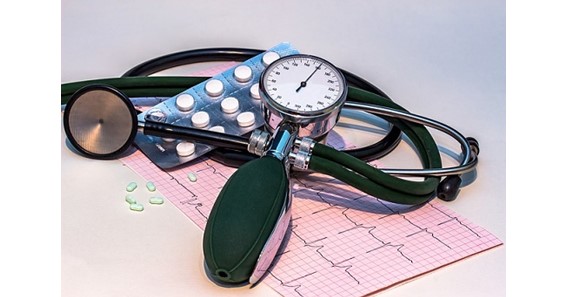Risk for bleeding nursing diagnosis is an important part of medical diagnosis and treatment. It involves recognition and assessment of risk factors that may lead to bleeding and potential ways to prevent and manage the diagnosis. This article will introduce the reader to the risk for bleeding nursing diagnosis, including its causes, symptoms, risk factors, diagnostic tests, treatments, management, and prevention.
Introduction to Risk for Bleeding Nursing Diagnosis
Risk for bleeding nursing diagnosis is a diagnostic category used by medical professionals to assess the potential risk of an individual bleeding. This risk assessment looks at the person’s medical history, any underlying conditions, lifestyle habits, and other factors that may contribute to the risk of bleeding. The goal of the assessment is to identify any potential risk factors that could lead to bleeding in order to be able to provide medical advice and treatment.
What is Risk for Bleeding Nursing Diagnosis?
A nursing diagnosis for the potential of bleeding involves assessing an individual’s risk factors for bleeding. This examination looks at any health conditions existing, lifestyle practices, and other elements that might put them at imminent risk. This comprises of conditions such as anemia, haemorrhage conditions, particular treatments, or any physical or mental matters undergirding that could make the person more vulnerable to bleeding. In addition, lifestyle practices such as smoking, drinking immoderately, or an unhealthy diet low in fruits and vegetables can also up the danger.
Causes of Risk for Bleeding Nursing Diagnosis
There are numerous causes that can lead to a risk of bleeding when it comes to nursing diagnosis. Some of these include anemia, bleeding disorders, and medicines that influence blood flow. Furthermore, certain practices such as smoking, consuming alcohol excessively, and eating an unbalanced diet which lacks fruits and vegetables may all increase the possibility of bleeding.
Symptoms Associated with Risk for Bleeding Nursing Diagnosis
Various elements such as medical issues, lifestyle practises, drugs, and other components can be causes for bleeding nursing analysis. Anemia, bleeding issues, and particular medicines which impact blood clotting are prevalent medical conditions. Moreover, activities like smoking, drinking too much, or having a food regimen without enough fruits and vegetables can also raise the danger of bleeding.
Risk Factors of Risk for Bleeding Nursing Diagnosis
Individuals with specific illnesses, for example anemia or bleeding issues, may be more prone to encountering issues identified with risk for bleeding. Other than that, propensities, for example, smoking, drinking exorbitantly, or having an eating regimen low in organic products and vegetables can likewise prompt a higher danger of bleeding. Moreover, certain prescriptions may likewise cause expanded danger of bleeding.
Read More: Offer of homework help and academic writing services cheaply
Diagnostic Tests for Risk for Bleeding Nursing Diagnosis
Various tests can be administered to evaluate the potential for bleeding. These tests include blood work to establish any anaemia or other health issues, imaging scans like ultrasound or x-ray, and genetics tests to check for any bleeding disorders. In addition, other tests could be undertaken to examine lifestyle factors that could possibly raise the risk of bleeding.
Treatments for Risk for Bleeding Nursing Diagnosis
Treatment for risk for bleeding nursing diagnosis depends on the underlying cause. Treatment may include lifestyle changes such as quitting smoking or a change in diet, medications to control medical conditions such as anemia or bleeding disorders, or other treatments such as surgery for certain conditions. Additionally, there may be treatments available to help manage the symptoms of the risk factors for bleeding.
Management of Risk for Bleeding Nursing Diagnosis
Management at risk for bleeding nursing diagnosis involves monitoring and managing the individual’s underlying conditions and lifestyle habits. This includes following the prescribed medical treatments, engaging in healthy lifestyle behaviors such as diet and exercise, and monitoring the individual for any changes in their risk factors for bleeding. Additionally, it can also involve regular checkups with the doctor to evaluate the individual’s health and identify any changes in the risk factors for bleeding.
Prevention of Risk for Bleeding Nursing Diagnosis
The most effective means of reducing the likelihood of bleeding linked to nursing diagnosis is to assess and manage any medical issues or lifestyle habits that may contribute to the danger of bleeding. This involves complying with treatments provided by healthcare professionals, having a healthy lifestyle such as eating well and being active, and observing any changes in their risk of bleeding. Additionally, it is prudent to desist from practices that can raise the risk of bleeding and to see a doctor straight away when there are any warning signs of a potential for bleeding.
Conclusion
In conclusion, risk for bleeding nursing diagnosis is an important part of medical diagnosis and treatment. It is important to have an understanding of the risks and underlying causes of risk for bleeding, as well as the steps that can be taken to prevent and manage it. Additionally, it is important to have regular checkups with a healthcare provider to monitor for any changes in the risk factors for bleeding and to seek medical attention if any symptoms of risk for bleeding occur.
Hire sweet study Homework Helpers To Do Your Homework Before The Deadline
Click Here – What Is Shipment Exception FedEx?

